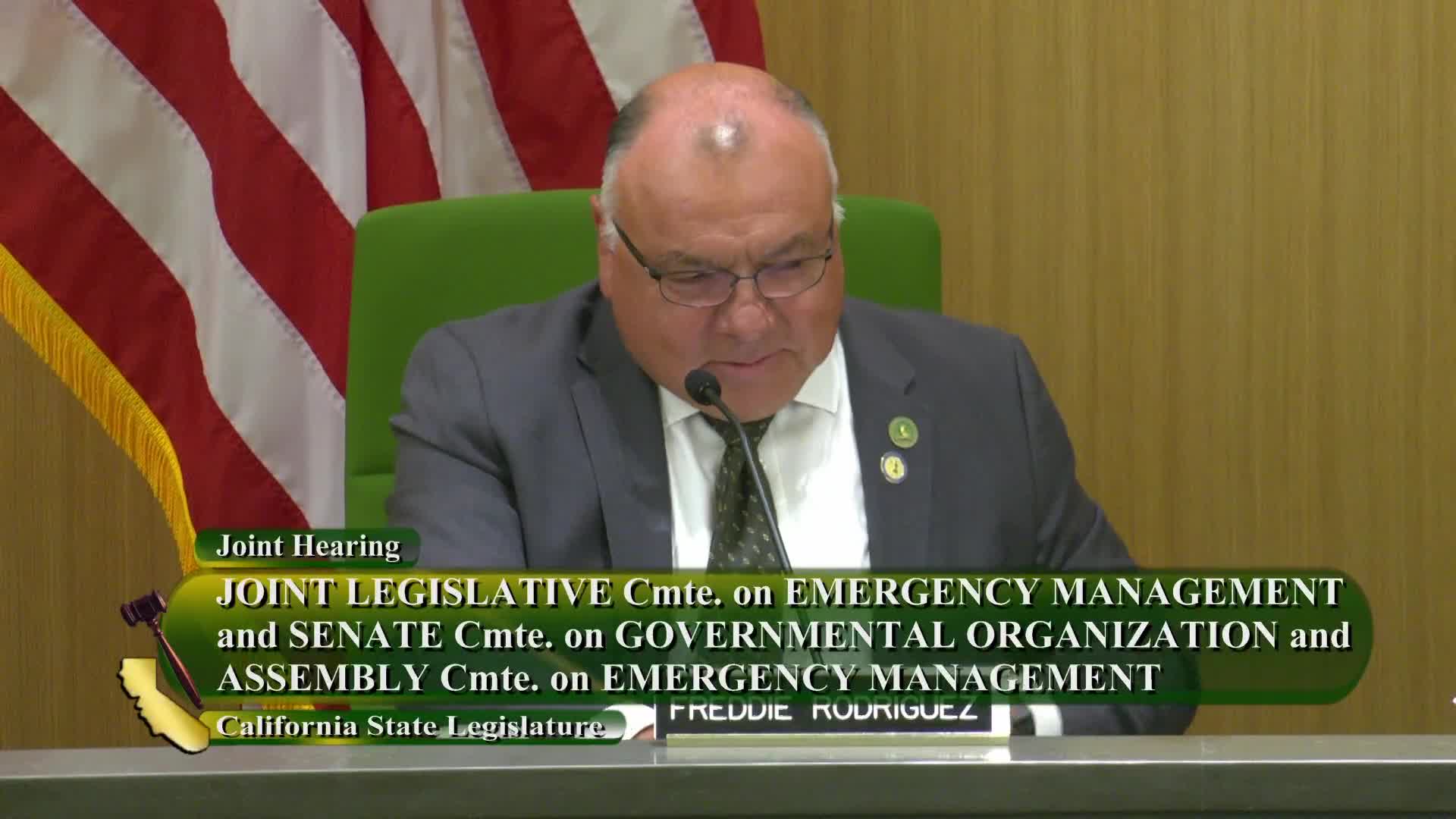California harnesses AI to combat escalating disaster threats
August 05, 2024 | California State Assembly, House, Legislative, California

This article was created by AI summarizing key points discussed. AI makes mistakes, so for full details and context, please refer to the video of the full meeting. Please report any errors so we can fix them. Report an error »

California officials convened a joint informational hearing to discuss the state's innovative use of artificial intelligence (AI) in enhancing emergency preparedness and response amid escalating climate-related disasters. The meeting highlighted the urgent need for advanced technologies as California faces increasingly severe wildfires, floods, and other natural hazards.
In a poignant opening statement, a state representative recounted a recent visit to a devastating fire site, which had quickly escalated to become the fourth largest in California's history. The representative emphasized that climate change is exacerbating the frequency and intensity of such disasters, necessitating the adoption of cutting-edge tools to improve emergency management.
Key initiatives were presented, including the Alert California program, which employs a network of high-resolution cameras and AI to detect wildfires early, providing critical real-time data to firefighters. Additionally, the state’s Threat Assessment Center utilizes AI for threat analysis and coordinated responses across various agencies. The Cybersecurity Integration Center is also leveraging generative AI to conduct risk analyses for California's critical energy infrastructure.
The discussions underscored AI's potential to predict disasters by analyzing data to forecast weather patterns and identify areas at risk for floods or fires. This predictive capability could lead to better resource allocation and evacuation planning, ultimately saving lives.
Senator Dodd noted California's position as a global leader in technology, housing 35 of the world's top 50 AI companies. He expressed optimism about the state's ability to leverage these technological advances for improved emergency response, citing recognition from Time magazine for the collaborative efforts of Cal Fire and UC San Diego in developing the AI Fire Detection Tool.
However, concerns were raised regarding resource allocation. Senator Soroto pointed out that while AI can identify potential problems, the lack of budgetary support for essential resources, such as camp crews for fire mitigation, could hinder effective response efforts. He stressed the importance of not only recognizing emergencies but also having the necessary personnel and resources to address them.
The hearing concluded with a call for continued innovation, oversight, and collaboration among state agencies, tech companies, and academic institutions to ensure that AI technologies effectively enhance public safety and resilience in California.
In a poignant opening statement, a state representative recounted a recent visit to a devastating fire site, which had quickly escalated to become the fourth largest in California's history. The representative emphasized that climate change is exacerbating the frequency and intensity of such disasters, necessitating the adoption of cutting-edge tools to improve emergency management.
Key initiatives were presented, including the Alert California program, which employs a network of high-resolution cameras and AI to detect wildfires early, providing critical real-time data to firefighters. Additionally, the state’s Threat Assessment Center utilizes AI for threat analysis and coordinated responses across various agencies. The Cybersecurity Integration Center is also leveraging generative AI to conduct risk analyses for California's critical energy infrastructure.
The discussions underscored AI's potential to predict disasters by analyzing data to forecast weather patterns and identify areas at risk for floods or fires. This predictive capability could lead to better resource allocation and evacuation planning, ultimately saving lives.
Senator Dodd noted California's position as a global leader in technology, housing 35 of the world's top 50 AI companies. He expressed optimism about the state's ability to leverage these technological advances for improved emergency response, citing recognition from Time magazine for the collaborative efforts of Cal Fire and UC San Diego in developing the AI Fire Detection Tool.
However, concerns were raised regarding resource allocation. Senator Soroto pointed out that while AI can identify potential problems, the lack of budgetary support for essential resources, such as camp crews for fire mitigation, could hinder effective response efforts. He stressed the importance of not only recognizing emergencies but also having the necessary personnel and resources to address them.
The hearing concluded with a call for continued innovation, oversight, and collaboration among state agencies, tech companies, and academic institutions to ensure that AI technologies effectively enhance public safety and resilience in California.
View full meeting
This article is based on a recent meeting—watch the full video and explore the complete transcript for deeper insights into the discussion.
View full meeting
